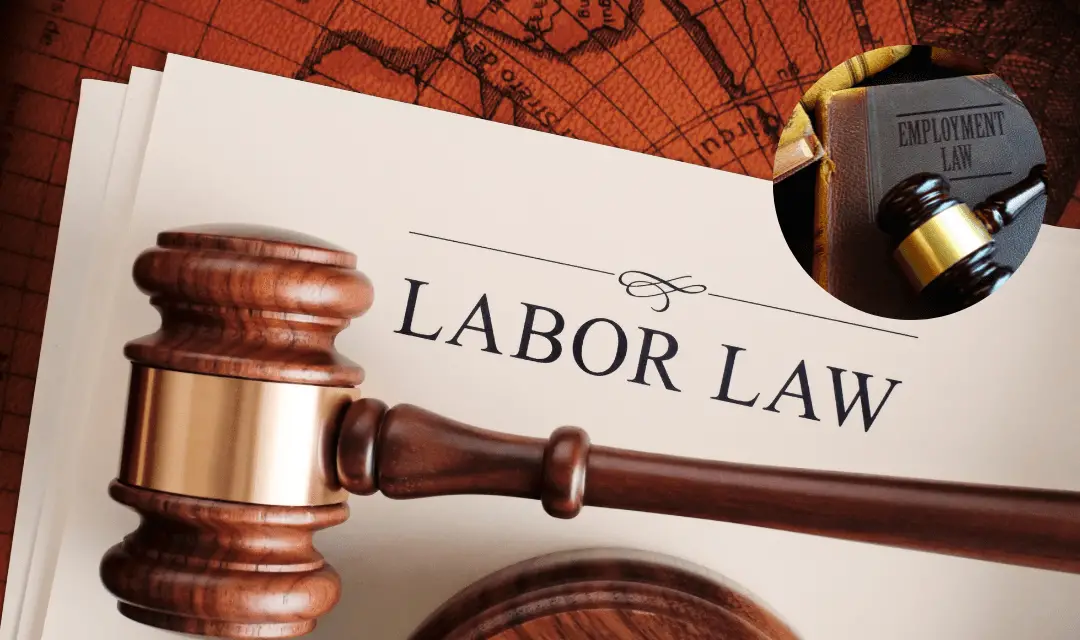Being employed is an important matter to someone’s life. This is a way to support one’s basic financial needs. Most people have the memory of their first job. This is often one of the most unforgettable moments. It is a mixed feeling of excitement and nervousness.
Similarly, it could only be either good or bad after an ensuing experience. When he gets the job, more often than not, it becomes his major consideration in all other decisions that he will make in his life.
Like, where he would live, if it requires his home to be near the workplace. When he would take vacations because most employers only allow limited absences. When he would retire since other companies offer retirement packages.
Then, as time passes, just like in any other relationship, issues would arise in an employee-employer relationship. The most common instance is when either the expectations of the employee or the employer are not met.
As to the employee, it is usually about the financial or other work-related benefits he seeks to get. While for the employer, the standard of the physical or mental services that is being required from the employee will now matter.
When the conflict between the employee and employer surfaces, the first and vital question to be determined is whether their relationship as such exists. Either of them will assert or deny it to get, or be insulated from, the relief demanded or damages that may occasion, as the case may be.
To some, their conflicts are resolved through mediation and settlement. However, to others, they even go up to the Highest Court of the land which would require the latter to apply the labor laws and jurisprudence in respect to that specific dispute.
Generally, the labor laws in the Philippines are liberally interpreted in favor of the workers. The rights of the employees are protected by the laws. They cannot be deprived of their work without just cause.
Nonetheless, the law also balances the rights of the employers. Not in all instances will the scale tilt to the workers, especially when they committed violations in their contracts or the company policies, as the situation may be.
These contracts and/or policies, obviously, are the main sources of their rights and obligations, which govern the relationships between the employees and their employers, in addition to the minimum standards set forth by the law.
Read through this article to gain or refresh your knowledge regarding employee-employer relationship in case you will face the same conflict some workers or business owners experienced in the course of such juridical relation.
How do you determine employee-employer relationship?
The most common and obvious way to know the existence of an employee-employer relationship is the presence of employment contract.
It is a formal agreement which sets forth the terms and condition of the employment including the rights and obligations of the employee and employer.
It is usually in written form and signed by the parties. Having this document, it is easier to resolve employment conflict, let alone knowing their respective positions in a particular dispute.
In the absence of the employment contract, it is more challenging to resolve some labor disputes. In fact, it is important to determine first if there is an employment relationship to establish if there is a labor dispute to begin with.
This will resolve which judicial or quasi-judicial body will assume jurisdiction over the case. If there exist an employee-employer relationship, it is within the ambit of National Labor Relations Committee. On the other hand, it will be within the jurisdiction of the regular courts.
The courts or other quasi-judicial bodies in resolving labor cases without employment contract usually look at the totality of the circumstances in the case.
Every employment suit is unique on its own and should be scrutinized in a case to case basis. It does not follow that in the absence of written employment contract, employment cannot be proven.
There are already tests and set of the types of evidence that are laid down in our jurisprudence to determine the existence of employment relationship.
How do you determine if someone is an employee or independent contractor?
To determine whether a person is an employee or an independent contractor, the circumstances surrounding their work should be distinguished.
As to how they were hired:
An employee is directly hired by the company and normally undergoes individual selection and assessment in accordance with the company’s recruitment process if it is a corporation or hiring practice of an individual employer.
The data of the employee will be included in the company and the employee will be given employee number, uniform, and employee identification card.
On the other hand, independent contractors are usually employed by another company which will only be assigned to other workplace or business entity. Individual contractors are usually professional rendering services based on his expertise.
As to how the work is being performed:
For an employee, the work is being done in accordance with the instruction and total control of the employer. There are guidelines set by the employer and the expected output. The employees time in work are also monitored, normally 8 hours per day if the employee is working full-time, subject to overtime or undertime work as may be necessary in accordance with the minimum labor standards..
Conversely, independent contractors have more independence in doing their work. They are only assessed with their final output and not how they come up with such results.
What constitute employee-employer relationship?
In determining the existence of an employer-employee relationship, in the plethora of cases, the Supreme Court1 has constantly relied on the four-fold test, to wit:
- the selection and engagement of the employee;
- the payment of wages;
- the power of dismissal; and
- the employer’s power to control the employee with respect to the means and methods by which the work is to be accomplished.
In the selection and engagement of the employee, it must be proved that the qualification and fitness of an employee was assessed by the employer and the later specifically chose the former to handle the work.
Next, in exchange of the service given by the employee, he or she must be compensated whether in a weekly or monthly basis depending on their agreement.
Payment of wages is usually in a continuous or regular basis. The employer is obliged to follow the minimum wage set forth in the labor laws.
The employer must have the power to dismiss the employee if he or she committed violations on their agreement or the minimum employment obligations stated in the law.
The employer usually has policies regarding the disciplinary guidelines of the employees. Normally, private individual employers also follow practices such as talking to the employees or giving them warnings before dismissing them.
Lastly, the employer’s power to control the means and method of the employee is considered the most significant determinant of the existence of an employer-employee relationship as stated in the case of Del Rosario vs. ABS-CBN.
This test is premised on whether the person for whom the services are performed reserves the right to control both the end achieved and the manner and means used to achieve that end.
What is the importance of employee-employer relationship?
Employee-employer relationship is vital for the following reasons, to wit:
First, it is needed for the case of illegal dismissal to prosper.
Non-existence of employee-employer relationship is a common defense of the employers when they are denying the act of dismissing a person in work allegedly without just cause.
Without this, there will be no cause of action and the labor court cannot act on it.
Second, this determines the jurisdiction of the court.
In the case of People’s Broadcasting vs. Secretary of Labor,2 the Supreme Court stated that the DOLE has the power to determine whether or not an employer-employee relationship exists.
The DOLE would have jurisdiction only if the employer-employee relationship has already been terminated, or it appears, upon review, that no employer- employee relationship existed in the first place.
On the other hand, if employee-employer relationship exists, the Labor Arbiter will have original jurisdiction over it while the NLRC has appellate jurisdiction.3
Under Art. 217(3) of the Labor Code, the Labor Arbiter has original and exclusive jurisdiction over those cases involving wages, rates of pay, hours of work, and terms and conditions of employment, if accompanied by a claim for reinstatement.4
Hence, if a complaint is filed with the DOLE, and it is accompanied by a claim for reinstatement, it should be dismissed for want of jurisdiction.5
Third, the employee-employer relationship determines the rights and obligations the parties.
Aside from the minimum standard provided by the law, the relationship of every employees and employer is peculiar based on what they agreed upon.
The conditions of their relationship depends on the nature of their jobs. For instance, when an employee is asserting his or her rights for employment benefit, two elements must concur.
These are the existence of employee relationship and reasonable causal connection between the parties, employer-employee relations, as well as the claim asserted.
Another example, in some cases the issue like whether the termination of a higher management officer a labor case or a corporate case arise.
Here, it has to be determined whether the employee is corporate officer or ordinary employee. If the complainant is named as a corporate officer per Articles and/or by-laws, then the removal of the person is an intra-corporate controversy and within the jurisdiction of the ordinary courts.
If not, then the person is an ordinary employee who may only be terminated for just or authorized cause, and after due process compliance with the provisions of the Labor Code.
What determines an employee?
An employee is a person who handles specific job usually based on his expertise or qualification wherein he exerting physical and mental labor for the benefit of an employer in exchange for a compensation and other benefit in a regular basis.
To determine whether a person is an employee, the following should be looked into:
- There must be an employer who chose the person and assign job to him base on the requirement of the job and to his credentials. The employer must control his means and methods of doing the job
- There must be a job that requires exertion of effort and an output as a result of such effort.
- The employee is paid in a regular basis and is dependent on that for his
In Salabe vs Social Security Commission,6 it is stated that the Court has consistently ruled that there is no hard and fast rule designed to establish that someone is an employee.
Some forms of evidence7 that have been accepted include, but are not limited to:
- identification cards,
- cash vouchers,
- social security registration,
- appointment letters or employment contracts,
- payroll,
- organization charts, and
- personnel lists, among others.
If these physical evidence are present and can be scrutinized, the person can be said to be an employee.
It is also stated in the case of Fernandez vs. Kalookan Slaughterhouse8 that the totality of petitioner’s evidence and the admissions of Kalookan Slaughterhouse have convinced the Court that petitioner was indeed an employee of Kalookan Slaughterhouse.9
Petitioner [Fernandez] was able to present an ID., gate passes, log sheets, and a trip ticket. Kalookan Slaughterhouse even admitted that uniforms were given to all personnel, including petitioner.10
The Court of Appeals, however, disregarded the gate passes, as it claimed that the gate pass had a note that such did not qualify the holder as an employee. This is an error as this only applied to one of the gate passes and the other gate passes did not have this notation.11
What has been decided
In the case of Francisco vs National Labor Relations Commission [NRLC],12 the Court held that the proper standard of economic dependence is whether the worker is dependent on the alleged employer for his continued employment in that line of business.13
It was stated previously that the four-fold test is being used in determining the existence of employee-employer relationship.
However, in certain cases the control test is not sufficient to give a complete picture of the relationship between the parties, owing to the complexity of such a relationship where several positions have been held by the worker.14
The better approach15 would therefore be to adopt a two-tiered test involving:
- the putative employer’s power to control the employee with respect to the means and methods by which the work is to be accomplished; and16
- the underlying economic realities of the activity or17
This two-tiered test would provide a framework of analysis, which would take into consideration the totality of circumstances surrounding the true nature of the relationship between the parties.18
This is especially appropriate in cases where there are no written agreements or terms of reference to base the relationship on; and due to the complexity of the relationship based on the various positions and responsibilities given to the worker over the period of the latter’s employment.19
Determination of the relationship between employer and employee
This will depend upon the circumstances20 of the whole economic activity, such as:
- the extent to which the services performed are an integral part of the employer’s business;
- the extent of the worker’s investment in equipment and facilities;
- the nature and degree of control exercised by the employer;
- the worker’s opportunity for profit and loss;
- the amount of initiative, skill, judgment or foresight required for the success of the claimed independent enterprise;
- the permanency and duration of the relationship between the worker and the employer; and
- the degree of dependency of the worker upon the employer for his continued employment in that line of
According to Chan (2019), the rule enunciated in Article 4 and Article 1702 in Civil Code likewise applies in the application of evidence in labor proceedings.
Consequently, whenever there is a doubt between the evidence presented by the employer and the employee, such doubt should be resolved in favor of the latter.
Time and again, the Supreme Court has pronounced that “if doubt exists between the evidence presented by the employer and the employee the scales of justice must be tilted in favor of the latter”.21
The policy is to extend the doctrine to a greater number of employees, which is in consonance with the avowed policy of the State to give maximum aid and protection to labor.
In illegal dismissal cases, the consistent rule is that the employer must affirmatively show rationally adequate evidence that the dismissal was for a just or authorized cause. In case it fails, then it would result in having the termination declared illegal.
- Alba vs. Espinosa, G.R. No. 227734, August 09, 2017[↩]
- G.R. No. 179652, March 6, 2012[↩]
- Ibid.[↩]
- Ibid.[↩]
- Ibid.[↩]
- G.R. No. 223018, August 27, 2020[↩]
- Ibid.[↩]
- G.R. No. 225075, June 19, 2019[↩]
- Ibid.[↩]
- Ibid.[↩]
- Ibid.[↩]
- G.R. No. 170087, August 31, 2006[↩]
- Ibid.[↩]
- Ibid.[↩]
- Ibid.[↩]
- Ibid.[↩]
- Ibid.[↩]
- Ibid.[↩]
- Ibid.[↩]
- Ibid.[↩]
- Hubilla, et al. vs. Hsy Marketing Ltd., Co., et al., G. R. No. 207354, January 10, 2018[↩]




